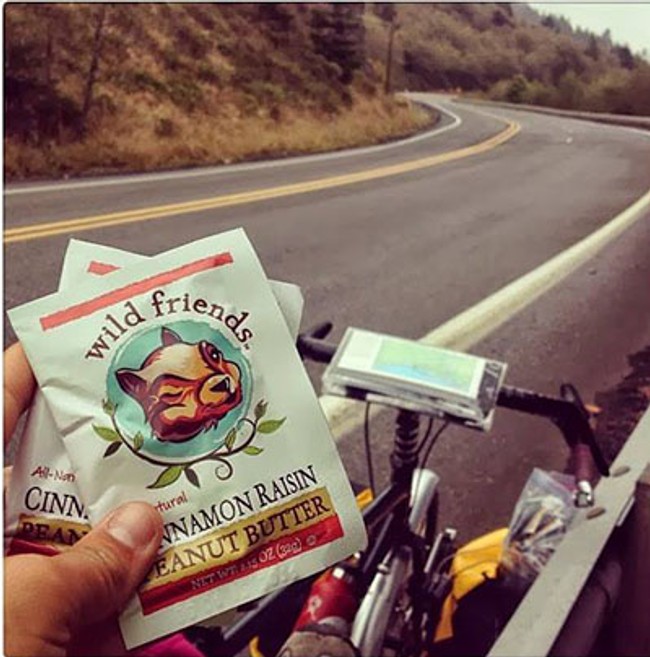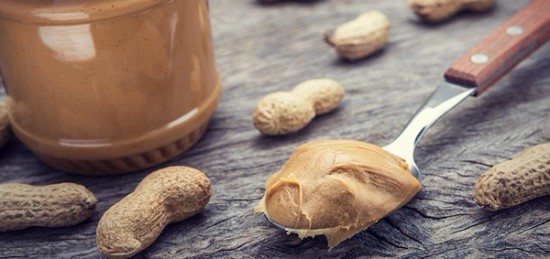Odds are you’ve been a peanut butter lover all your life and that you have one jar—if not more—at home right now. This year, we’re taking a deeper look at what goes into making such a beloved food. From the peanut grower planting and the researcher ensuring a high quality crop to harvesting, inspecting, manufacturing and humanitarian aid, we’ll look at all facets in The Journey of a Peanut Butter Jar.
As we continue on our Journey of a Peanut Butter Jar, the peanuts come to their next stop – the manufacturer – for whom quality and consistency are critically important, no matter how big or small.
“Our peanuts are sourced in the United States,” said Mike Guanella, senior brand manager for Skippy, which was started in 1933 and is one of the best-selling peanut butter brands. “We work with a number of peanut shellers who work with peanut farmers, and we pick the best run of peanuts we can find.”
“We have met several peanut farmers and it was so interesting to hear what their day-to-day lives are like,” said Erika Welsch, co-owner of Wild Friends, which started four years ago with a line of uniquely flavored peanut butters and more. “We are so appreciative of all of the hard work that peanut farmers and their families do to make sure companies like ours can have wonderful peanuts to use.”

Erika (left) and Keeley (right) of Wild Friends started experimenting with homemade peanut butter in college.
What would lead someone to become a peanut butter manufacturer? For Erika and her friend Keeley Tillotson, it was a shared passion for peanut butter and the success they found in making flavored versions. “Keeley and I were roommates during our freshman year of college and soon realized we both LOVED peanut butter and would take turns buying jars at the store,” Erika said. “One day we ran out of our beloved snack and decided to get creative in the kitchen with a brand new food processor and the bag of peanuts we happened to have in our pantry. That afternoon, we came up with so many different flavors and gave it away to friends and family. What we thought would just be a fun weekend project, quickly turned into a budding business!”
The Process for Processing
Peanut butter is typically made by two grinding steps. The first reduces the peanuts to a medium grind and the second to a fine, smooth texture. To make chunky peanut butter, manufacturers incorporate larger peanut pieces or they use a varied grinding process by removing a rib from the grinder.

At the same time the peanuts are fed into the grinder, manufacturers sometimes add just a few ingredients to the mix. “Peanut butter is at least 90 percent peanuts,” Mike added. At its core, “it’s a very simple product: peanuts, salt, sugar and some oil to stabilize it.”
Keeley and Erika develop their own recipes for their flavored peanut butters—from chocolate coconut to honey pretzel. “We started this company because we were so passionate about food and cooking, so the flavor development is the most fun aspect of our business,” said Erika. “We get inspiration from food trends and flavor combinations that show up in products outside of the nut butter section. Our food processor still gets lots of use!”

Outside the test kitchen, peanut butter moves from the grinder to a stainless steel hopper, which serves as an intermediate mixing and storage point. The finished product is packed in jars, capped, labeled and packed on flats for shipping to grocery stores across the country. Typically, the process takes anywhere from a few dozen to more than 100 people from start to finish.
Watching Out for What’s Next
Being a successful food manufacturer means staying ahead of trends. And peanut butter is no exception, Mike explained. “Even though the number one usage for peanut butter is on a sandwich with jelly, we have seen a significant growth in peanut butter as a snacking alternative, such as dipping apples or pretzels, mixing peanut butter in smoothies to boost protein level and more.”
“Our vision at Skippy is to expand peanut butter beyond the jar ? easier to snack, easier to use in recipes, easier to enjoy any time of the day,” he added.

Peanut butter is on the move with portable packaging like Skippy’s Singles.
“These days, it is very common for people to have more than just a plain crunchy or creamy jar of peanut butter,” said Erika. “We see customers who have a plain, a chocolate and another flavor. People are more willing to try out different flavors and use peanut butter in more ways than just on their bread. That creates space for more companies like us to innovate with flavors and ingredients.”

Flavors and single serve packets are more innovations that speak to the future of America’s favorite nut butter.
“The single-serve packaging is really taking off,” Erika continued. “In today’s world, everyone is so busy and it’s often hard to find healthy, quality snack foods. Peanut butter in individual packages is a great way to get a boost of protein while on the go. We currently sell in 1.15-ounce packets and they are a very successful item for us.”
Last year, Americans purchased more than 578 million jars of peanut butter in the United States1. While traditional peanut butter still reigns, new flavors and ingredients are being added all the time for fun and convenience.
“Everyone has their own preference of ingredients, tastes, processing methods etc.,” said Erika. “We know that we are not going to be able to make everyone happy, but by choosing high-quality ingredients that also taste delicious we hope that we can please the majority of people.”
At the end of the day, perhaps the reason peanut butter remains one of America’s favorite foods is that it reminds us all of good times. “Skippy brand stands for fun,” Mike said. “Our new ‘Skippy! Yippee!’ campaign reinforces peanut butter as a nutritious protein, but also fun way to enjoy this protein.”
1. IRI data for last 52 weeks, ending Oct. 5, 2014.
